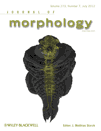
JOURNAL OF MORPHOLOGY
Scope & Guideline
Fostering Communication in Anatomical Research
Introduction
Aims and Scopes
- Anatomical and Morphological Studies:
The journal emphasizes detailed anatomical research, exploring morphological characteristics and variations in various species, including humans, animals, and plants. It covers comparative anatomy, functional morphology, and the implications of these studies for clinical practice. - Histological and Histopathological Analysis:
A significant focus is placed on the microscopic study of tissues, examining histological structures, cellular responses, and pathological changes. This includes investigations into the effects of various treatments and environmental factors on tissue morphology. - Application of Advanced Imaging Techniques:
The journal features research utilizing advanced imaging modalities such as computed tomography (CT), magnetic resonance imaging (MRI), and cone-beam computed tomography (CBCT) to enhance the understanding of anatomical structures and their clinical relevance. - Interdisciplinary Approaches:
Research published in the journal often incorporates insights from various fields, including biology, medicine, and engineering, highlighting the interconnectedness of anatomical studies with technology and clinical applications. - Educational Innovations in Anatomy:
The journal also addresses the pedagogical aspects of anatomy education, exploring innovative teaching methods and technologies that enhance learning outcomes for students in health and medical sciences.
Trending and Emerging
- Integration of Artificial Intelligence in Morphological Studies:
There is a growing trend towards utilizing artificial intelligence and machine learning techniques for analyzing morphological data, particularly in imaging and classification tasks, enhancing the efficiency and accuracy of anatomical assessments. - Focus on Functional Morphology and Clinical Applications:
Research prioritizing functional morphology—how anatomical structures relate to their functions in health and disease—is on the rise, emphasizing the practical implications of morphological studies in clinical settings. - Investigations of Morphological Variability and Its Clinical Significance:
Studies exploring morphological variability among populations, particularly in relation to clinical outcomes and surgical procedures, are increasingly prominent, reflecting a shift towards personalized medicine in anatomical research. - Innovative Educational Tools and Technologies:
The journal is seeing an uptick in submissions that explore the use of digital tools, virtual dissection tables, and interactive platforms for teaching anatomy, especially in response to the challenges posed by the COVID-19 pandemic. - Environmental and Developmental Influences on Morphology:
Research examining how environmental factors, such as nutrition and exposure to toxins, influence developmental processes and morphological outcomes is gaining traction, highlighting the interaction between morphology and health.
Declining or Waning
- Traditional Comparative Anatomy:
There appears to be a reduction in studies focused solely on traditional comparative anatomy without clinical application. As the field evolves, there is a greater emphasis on integrating comparative studies with clinical implications and modern imaging techniques. - Historical Anatomical Studies:
Research that solely focuses on historical perspectives of anatomy, including ancient practices or terminologies, has decreased. The journal is moving towards more contemporary studies that emphasize current clinical relevance and applications. - Basic Morphometry Without Clinical Context:
Papers that present basic morphometric data without linking findings to clinical applications or implications are becoming less frequent, as there is a growing expectation for research to demonstrate direct relevance to medical and health sciences. - Single-Species Studies:
There is a noticeable decline in studies focusing on a single species in isolation. Instead, research is increasingly comparative or involves multiple species to draw broader conclusions relevant to anatomy and morphology.
Similar Journals
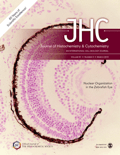
JOURNAL OF HISTOCHEMISTRY & CYTOCHEMISTRY
Exploring Cellular Landscapes Through Rigorous ResearchWelcome to the JOURNAL OF HISTOCHEMISTRY & CYTOCHEMISTRY, a premier platform for the dissemination of cutting-edge research in the fields of anatomy and histology. Published by SAGE PUBLICATIONS LTD, this esteemed journal has been a cornerstone of academic inquiry since its inception in 1953 and continues to play a vital role in advancing our understanding of cellular structure and function. With an impressive Impact Factor reflected in its rank as Q1 in both Anatomy and Histology categories, the journal ranks #5 out of 48 in Medicine Anatomy and #17 out of 62 in Medicine Histology, making it an essential resource for researchers and professionals alike. The journal provides a rigorous peer-review process and encourages submissions that enhance the scientific community's knowledge. As a vital resource for students, professionals, and researchers focusing on histochemical methodologies, the JOURNAL OF HISTOCHEMISTRY & CYTOCHEMISTRY offers insights into the latest advancements and critical debates within this dynamic discipline.
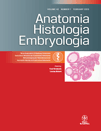
ANATOMIA HISTOLOGIA EMBRYOLOGIA
Cultivating a Deeper Understanding of Biological SystemsANATOMIA HISTOLOGIA EMBRYOLOGIA, published by Wiley, is a well-regarded journal that serves as a vital resource in the field of anatomy and histology, with a particular emphasis on embryological studies. Established in 1972, this journal fosters cutting-edge research and discussions that deepen our understanding of the intricate relationships between structure and function across various species, while also addressing the parallels within veterinary and medical contexts. Though currently not open access, the journal maintains a significant impact within its scope, evidenced by its strong performance in Scopus rankings, particularly in the veterinary sciences, where it stands at rank #81 out of 194. With its dedicated focus on progressive scientific inquiry and publication regularly until 2024, the journal is committed to advancing knowledge and providing a platform for scholars, researchers, and practitioners alike. ANATOMIA HISTOLOGIA EMBRYOLOGIA is pivotal for those aiming to engage with the latest findings and methodologies in the fields of medicine and veterinary science, ensuring it remains an essential addition to any academic library.
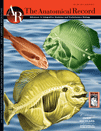
Anatomical Record-Advances in Integrative Anatomy and Evolutionary Biology
Pioneering Insights in Anatomy and Evolutionary Studies.Anatomical Record-Advances in Integrative Anatomy and Evolutionary Biology, an esteemed journal published by WILEY, serves as a pivotal platform for scholars in the fields of anatomy, biotechnology, ecology, evolutionary biology, and histology. With an ISSN of 1932-8486 and an E-ISSN of 1932-8494, this journal has demonstrated its academic rigor by maintaining a Q2 ranking across multiple relevant categories, including Anatomy and Biotechnology, and consistently achieving a high Scopus ranking in its respective fields. Its scope, covering integrative approaches to anatomical research and evolutionary studies, fosters interdisciplinary collaboration and innovation. Researchers and practitioners can access the journal through various open-access options, ensuring that groundbreaking findings are disseminated widely. As a vital resource for advancing knowledge and exploring emerging trends, this journal greatly contributes to the understanding of biological systems and evolutionary processes, making it an essential read for those dedicated to pushing the boundaries of their respective disciplines.
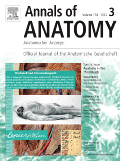
ANNALS OF ANATOMY-ANATOMISCHER ANZEIGER
Cultivating Knowledge in the Anatomical RealmANNALS OF ANATOMY - ANATOMISCHER ANZEIGER is a premier journal published by Elsevier GmbH, focusing on the intricacies of anatomical research and developmental biology. Established in 1992, this journal has continuously contributed to the advancement of knowledge in these fields, boasting an impressive impact factor that positions it within the Q2 quartile for Anatomy and a respectable ranking in Developmental Biology. With a Scopus ranking of #17 in Anatomy and #45 in Developmental Biology, ANNALS OF ANATOMY stands as a critical resource for researchers, professionals, and students alike, fostering scholarly dialogue and innovation. While currently not an open-access journal, its comprehensive scope and rigorous peer-review process ensure that the research published is of the highest quality. Based in Germany, this journal addresses a diverse range of topics and remains an essential platform for disseminating significant findings in the anatomical sciences and their interconnections with other biological fields.

ZOOLOGICAL RESEARCH
Advancing Animal Science Through Open Access ResearchZoological Research, published by Science Press, stands as a premier open-access journal in the fields of animal science, zoology, and ecology. Since its inception in 1980, it has fostered an inclusive platform for innovative research and dialogue within the scientific community, enabling researchers from across the globe to share their findings and insights. The journal's significant impact is underscored by its classification in the Q1 quartile across multiple categories, including Animal Science and Zoology, Ecology, and Nature Conservation for 2023, as well as its impressive rankings within Scopus, placing it in the top tier of its respective fields. Situated in Beijing, China, Zoological Research not only contributes to advancing knowledge but also emphasizes the critical importance of conservation practices in today’s rapidly changing ecosystems. With its commitment to open access, researchers, educators, and students alike benefit from immediate, unrestricted access to vital scientific information, making it an essential resource for anyone involved in the biological sciences.

INTERNATIONAL JOURNAL OF MORPHOLOGY
Advancing Knowledge in Morphological ScienceThe INTERNATIONAL JOURNAL OF MORPHOLOGY is a distinguished publication dedicated to the field of anatomy, significantly contributing to the scholarly discourse within this essential area of medical science. Published by the SOC CHILENA ANATOMIA and located in Chile, this journal aims to disseminate groundbreaking research that explores the structural aspects of organisms, from comparative anatomy to developmental processes. With an H-index reflecting its growing impact, the journal has achieved a Q3 ranking in the category of Anatomy according to the 2023 metrics, positioning it among the competitive resources available to the scientific community. Researchers and professionals engaging with this journal can expect to encounter rigorous studies, insightful reviews, and innovative methodologies. Though not strictly open access, the journal remains pivotal for those keen on advancing their understanding of morphological structures and their implications in various fields. With convergence ongoing from 2006 to 2024, the INTERNATIONAL JOURNAL OF MORPHOLOGY is poised to further solidify its role as a vital source of knowledge for anatomy enthusiasts and experts alike.

Brain Structure & Function
Fostering Knowledge in Brain Structure and FunctionBrain Structure & Function is a premier peer-reviewed journal published by Springer Heidelberg, focusing on the intricate relationships between brain anatomy and its functional implications. With a significant presence in the academic community, the journal is recognized for its high impact, evidenced by its rankings in the Q1 categories of Anatomy and Histology and its commendable position in the Neuroscience field. It has successfully maintained a convergence of research and innovation from 2007 to 2024, providing critical insights that drive forward our understanding of the brain. The journal's outstanding metrics, including a ranking of #6 in Anatomy and #18 in Histology within Scopus, highlight its role in shaping modern research. Offering open access options, Brain Structure & Function ensures that its cutting-edge findings and methodologies are accessible to a broad audience of researchers, professionals, and students eager to contribute to the evolution of neuroscience. With its comprehensive scope and commitment to high-quality research, this journal is an essential resource for anyone invested in the complexities of brain structure and their functions.

Medical Molecular Morphology
Unlocking the Mysteries of Molecular Morphology.Medical Molecular Morphology, published by SPRINGER JAPAN KK, stands as a significant resource in the fields of medicine and molecular biology, bridging critical insights between histological studies and modern therapeutic approaches. With an ISSN of 1860-1480 and E-ISSN of 1860-1499, this journal has evolved since its inception in 1996 and has continued to provide a platform for innovative research through 2024, establishing its relevance particularly in the realms of medical pathology and molecular morphology. Although categorized as Q3 in Medicine (miscellaneous) and Q4 in Molecular Biology per the 2023 quartiles, the journal's unique contributions cannot be understated, as evidenced by its Scopus rankings, which place it in the 52nd percentile for Pathology and 19th percentile for Molecular Biology. The journal’s mission focuses on disseminating valuable findings that enhance the understanding of cellular and molecular structures and their implications in health and disease. As access options are not currently open access, it remains essential for professionals and researchers to consider the journal's contributions as they pursue academic growth and impactful research in these dynamic fields.

Imaging Science in Dentistry
Elevating standards in imaging techniques for dentistry.Imaging Science in Dentistry is a premier open-access journal published by the Korean Academy of Oral & Maxillofacial Radiology, dedicated to the cutting-edge field of dental imaging and radiology. Since its inception in 2011, the journal has played a pivotal role in disseminating crucial research that advances our understanding of imaging techniques in dentistry, imaging-based diagnostics, and treatment planning. With an impressive Q2 ranking in various fields, including Dentistry (Miscellaneous), Radiological and Ultrasound Technology, and Radiology, Nuclear Medicine, and Imaging as of 2023, it is recognized for its contribution to the academic community, attracting a diverse readership that encompasses researchers, clinicians, and students. The journal provides a platform for sharing innovative methodologies, clinical studies, and reviews that shape current practices in dental imaging while promoting open access to enhance knowledge sharing globally. Through its rigorous peer-review process and commitment to high-quality publications, Imaging Science in Dentistry continues to set a standard for excellence in imaging sciences in the dental profession.

ACTA BIOLOGICA CRACOVIENSIA SERIES BOTANICA
Exploring biodiversity and conservation in every issue.ACTA BIOLOGICA CRACOVIENSIA SERIES BOTANICA is a distinguished journal published by the Polska Akademia Nauk (Polish Academy of Sciences), with its roots tracing back to 1996. As a pivotal publication in the field of Plant Science, it serves to disseminate high-quality research and findings, contributing to the ongoing development and understanding of biodiversity, plant ecology, and conservation. The journal is indexed under Scopus, ranked #203 out of 516 in its category, placing it in the 60th percentile and firmly within Q3 quartile for Plant Science in 2023. Researchers, professionals, and students will find invaluable content within its pages, enhancing their knowledge and supporting academic exploration. Although it currently does not offer open access options, the journal remains a crucial resource for those engaged in botanical sciences, with a commitment to advancing scholarship in Poland and beyond.